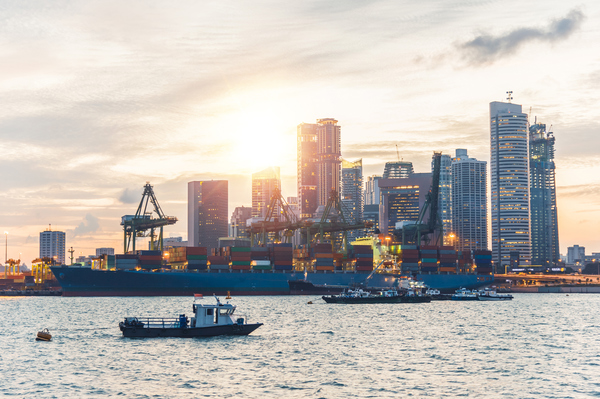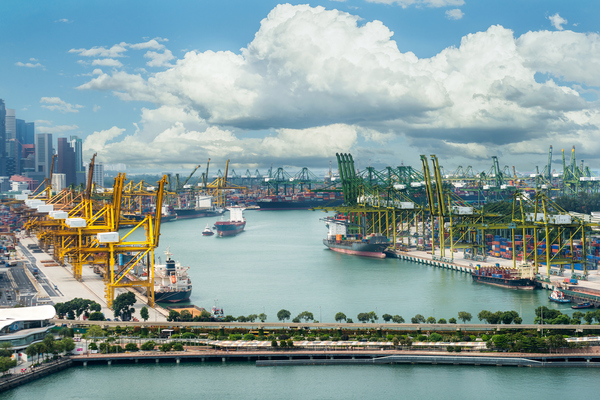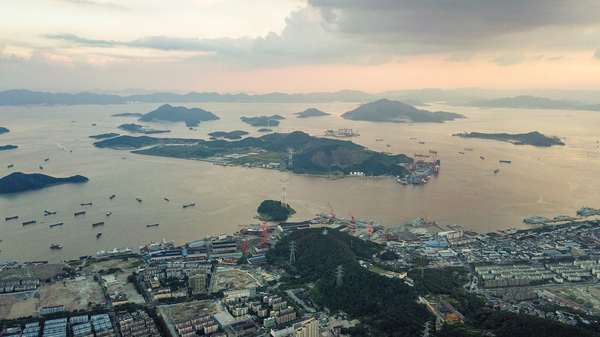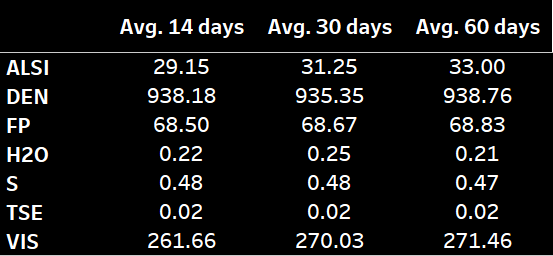East of Suez Fuel Availability Outlook 8 Jul 2025
VLSFO and HSFO lead times vary widely in Singapore
Several Chinese ports suspended due to Typhoon Danas
Availability good in Sri Lankan ports
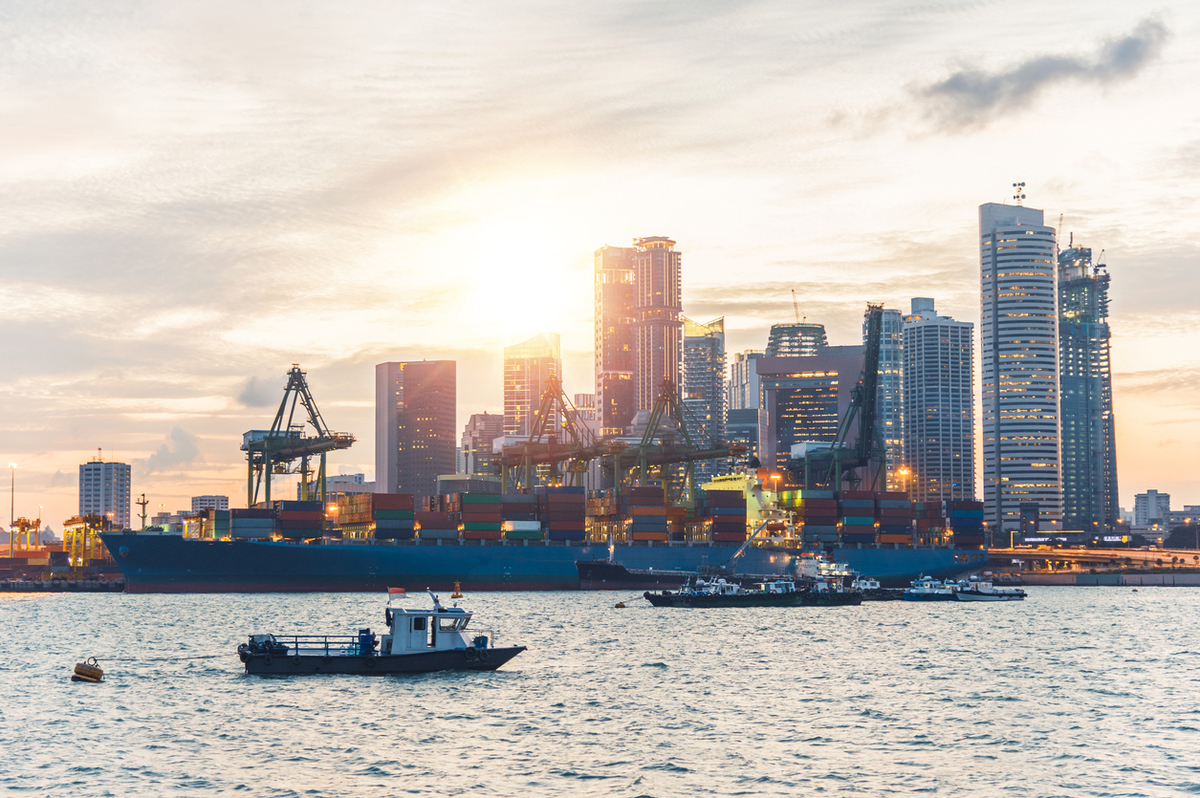 IMAGE: Logistics and transportation of container and cargo ships with a crane in Singapore. Getty Images
IMAGE: Logistics and transportation of container and cargo ships with a crane in Singapore. Getty Images
Singapore and Malaysia
VLSFO lead times in Singapore remain highly variable. Some suppliers are quoting as few as six days, while others recommend booking up to two weeks in advance due to long-term nominations—typically contract-based stems that take priority over spot demand. Tight loading schedules at some terminals have further contributed to the delays.
Lead times for LSMGO in Singapore have increased, with most suppliers now advising 6–9 days, up from 2–8 days last week. HSFO lead times also vary widely, ranging from 3–12 days, compared to 9–14 days last week.
In Malaysia’s Port Klang, VLSFO and LSMGO remain readily available, with prompt delivery possible for smaller parcels. However, HSFO supply continues to be tight.
East Asia
VLSFO supply in Zhoushan remains steady amid muted demand, with lead times slightly improving to 4–6 days from 5–7 days last week. Most suppliers are well-stocked, but delays in replenishment cargoes have led some to raise prices in anticipation of tighter availability, a trader noted. This has added further upward pressure on the grade’s price.
For other grades, HSFO lead times have extended to 5–7 days, up from 4–6 days last week, while LSMGO lead times have risen more sharply to 4–6 days from the previous 2–4 days.
However, bunker operations at Zhoushan’s outer and inner anchorages have been suspended since Sunday due to adverse weather caused by Typhoon Danas, according to a source.
The typhoon made landfall in Taiwan’s Chiayi County on Sunday and has since weakened. A second landfall is expected between Taizhou in Zhejiang and Ningde in Fujian on Tuesday afternoon or evening, according to China’s Ministry of Water Resources.
Full resumption of port operations is anticipated by Thursday, when conditions are expected to stabilise.
Several other ports across South China and the Yangtze River Delta have also suspended operations since Sunday, the source added.
In northern China, Dalian and Qingdao continue to offer good availability of both VLSFO and LSMGO. However, HSFO remains scarce in Qingdao. Tianjin is currently facing tight supply across all three fuel grades—VLSFO, LSMGO, and HSFO.
In Shanghai, VLSFO and HSFO remain in limited supply, while LSMGO stocks are relatively stable. Further south, availability varies: Fuzhou is experiencing restricted supply of both VLSFO and LSMGO, whereas Xiamen has sufficient VLSFO but limited LSMGO. In Yangpu and Guangzhou, prompt deliveries of both VLSFO and LSMGO remain challenging.
In Hong Kong, lead times for all fuel grades remain stable at around seven days. However, forecasts indicate adverse weather between 9–11 July, which could disrupt bunker deliveries.
Meanwhile, bunker operations at Taiwan’s Kaohsiung and Taichung ports resumed today after being suspended yesterday due to Typhoon Danas, according to another source. Currently, lead times at both Kaohsiung and Taichung are approximately 3–4 days for VLSFO and LSMGO. At other major Taiwanese ports, such as Hualien and Keelung, lead times are shorter—around two days.
In South Korea, LSMGO availability remains tight as more bunker buyers have shifted to Korean ports, where the grade is currently priced lower than in neighbouring Chinese ports. Busan’s LSMGO is now priced $16/mt below Zhoushan’s.
Lead times for LSMGO have widened significantly, now ranging from 4–14 days, up from 4–10 days last week. In contrast, availability for VLSFO has improved, with lead times shortening from 4–6 days to just 2–4 days. HSFO lead times have also eased, dropping from around five days last week to 2–4 days now.
However, bunker operations may be impacted by adverse weather across several ports. Ulsan and Onsan could see disruptions from 10–11 July, Busan from 8–14 July, Daesan and Taean from 11–12 July, and Yeosu from 11–14 July.
VLSFO supply remains robust at key Japanese ports such as Tokyo, Chiba, Yokohama, and Kawasaki. However, prompt availability is more limited in Osaka, Kobe, Sakai, and Mizushima, and remains particularly constrained in Nagoya and Yokkaichi.
LSMGO is generally well-stocked across the country, though securing prompt deliveries remains a challenge in several ports—including Osaka, Kobe, Sakai, Nagoya, Yokkaichi, and Mizushima. HSFO supply is steady overall, but prompt delivery is likewise restricted at these same ports.
In Oita, availability remains tight across all fuel grades.
Adverse weather is forecast to disrupt bunker deliveries at Thailand’s Koh Sichang and Laem Chabang ports on 9 July. In Vietnam, rough sea conditions are also expected to affect bunker operations in Ho Chi Minh on 10 July and again between 13–14 July.
Oceania
In Western Australia, VLSFO and LSMGO are readily available at Kwinana, Fremantle, and Port Kembla, with suppliers recommending lead times of 7–8 days.
In New South Wales, LSMGO supply remains steady in Sydney, though prompt deliveries of HSFO continue to face challenges.
Victoria’s ports—Melbourne and Geelong—have good availability of both VLSFO and LSMGO, but HSFO remains limited, particularly for prompt requirements.
In Queensland, VLSFO and LSMGO are well-stocked at Brisbane and Gladstone, with typical lead times of around seven days. However, HSFO availability in Brisbane remains tight.
Across the Tasman, VLSFO is sufficiently available in both Tauranga and Auckland. That said, bunker operations in Tauranga could be affected by adverse weather conditions forecast for 11–12 July.
South Asia
VLSFO supply remains tight across several Indian ports—including Mundra, Kandla, Mumbai, Tuticorin, Chennai, Visakhapatnam, Cochin, and Haldia—extending the supply constraints observed in recent weeks. LSMGO availability at most Indian ports continues to be handled on an enquiry basis.
The dock workers' union has announced a one-day strike in Mumbai from 9–10 July, with plans to extend the action to Cochin thereafter. Cargo operations in Mumbai are unlikely to face major disruptions, as most terminals there are privately operated. However, operations at Cochin are expected to be affected, according to GAC Hot Port News.
Adverse weather is also set to hamper bunker activity at multiple Indian ports. Disruptions are forecast at Kandla and Sikka on 9 July, and at Visakhapatnam and Mumbai from 8–9 July.
In Sri Lanka, lead times for all fuel grades at Colombo and Hambantota have improved significantly, dropping to around two days from approximately six days last week. However, rough weather conditions expected in Colombo between 11–12 July could impact bunker operations.
Middle East
In Fujairah, VLSFO requires lead times of approximately 5–7 days, slightly improved from last week's recommendation of around 6 days. Lead times for LSMGO and HSFO remain steady at about 5–7 days, showing little change compared to the previous week.
In Basrah, Iraq, both VLSFO and LSMGO are readily available, although HSFO supply remains limited. In Jeddah, Saudi Arabia, availability of both VLSFO and LSMGO is constrained.
At Egypt’s Suez port, stocks of all three conventional bunker grades, VLSFO, LSMGO, and HSFO, are nearly depleted. In Qatar’s Ras Laffan, the supply of VLSFO and LSMGO is currently tight.
Djibouti is facing significant supply pressure, with VLSFO and HSFO nearly out of stock, and LSMGO availability also limited.
On the other hand, Omani ports—including Sohar, Salalah, Muscat, and Duqm—continue to report stable LSMGO supply.
By Tuhin Roy
Please get in touch with comments or additional info to news@engine.online

Contact our Experts
With 50+ traders in 12 offices around the world, our team is available 24/7 to support you in your energy procurement needs.

